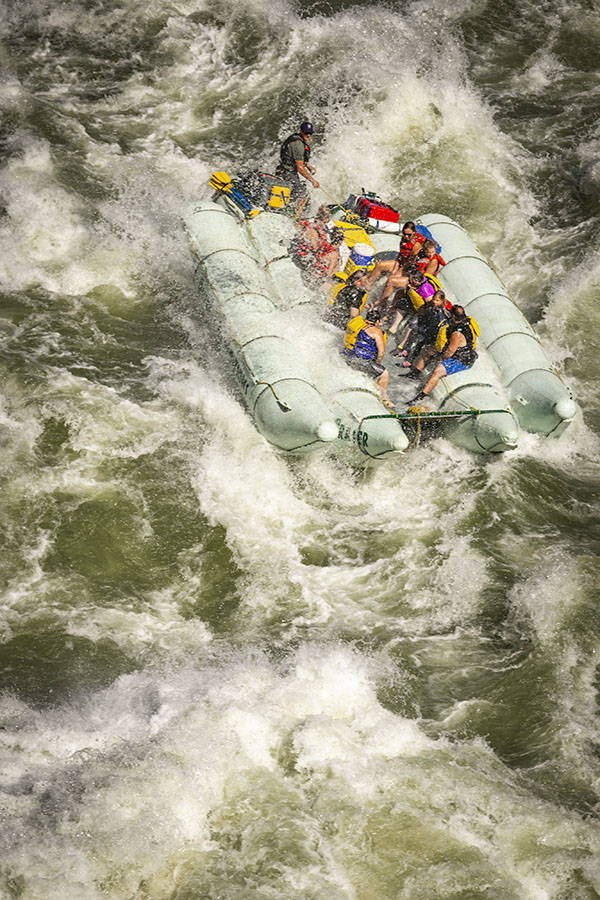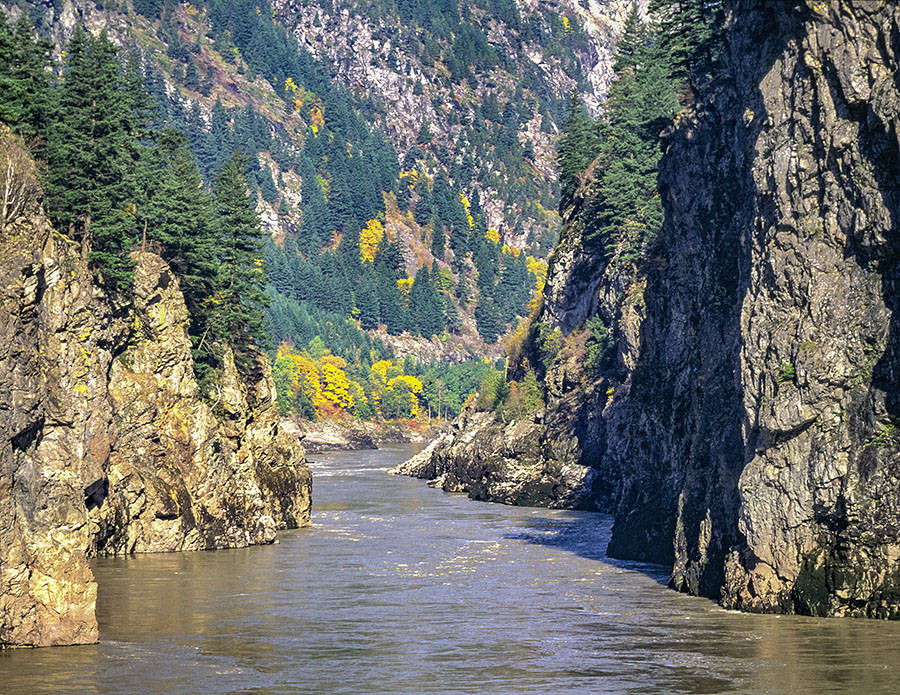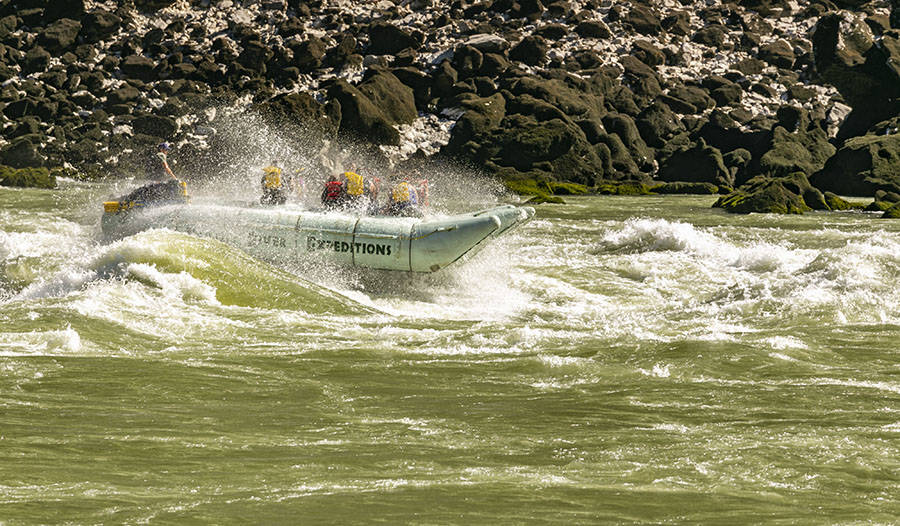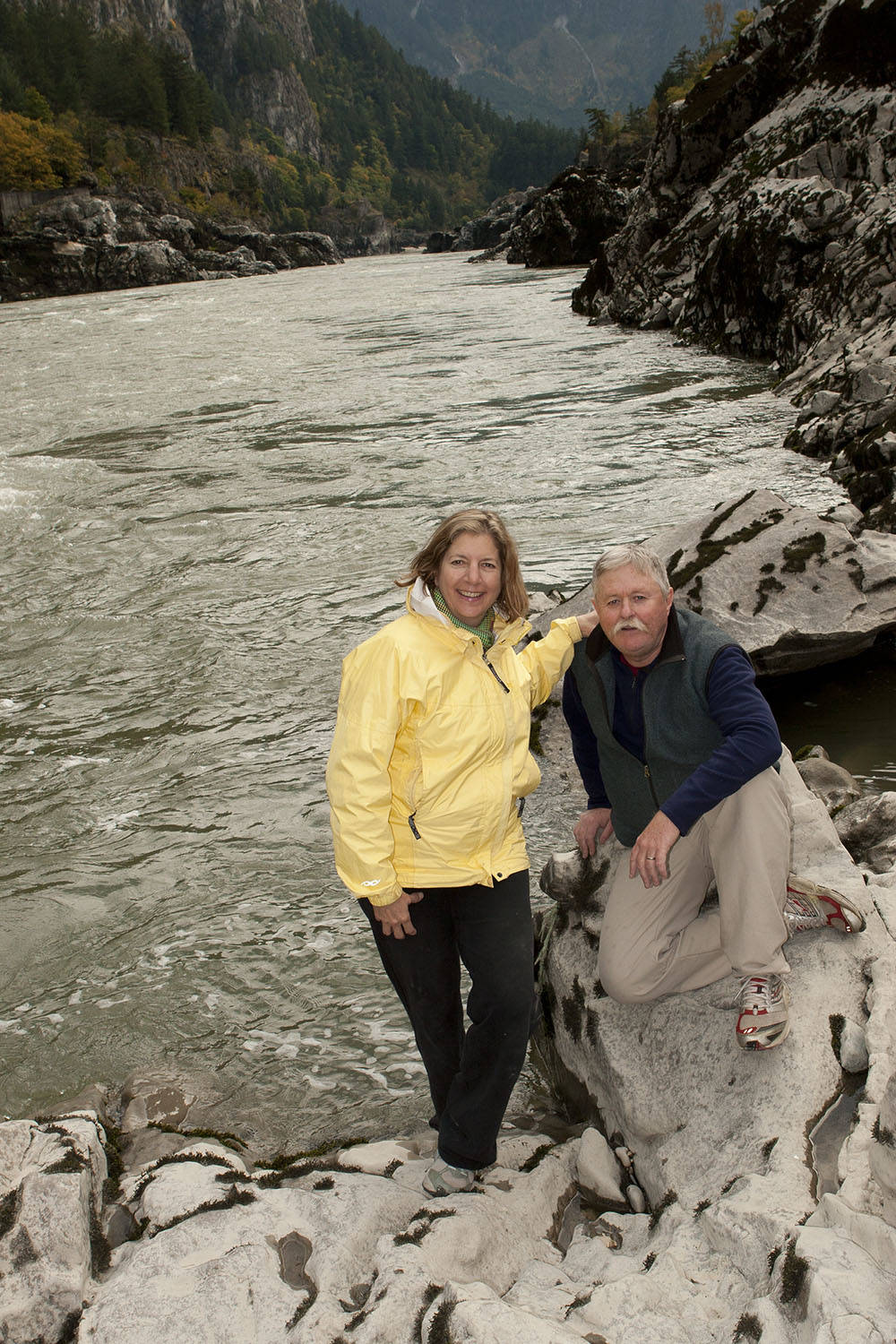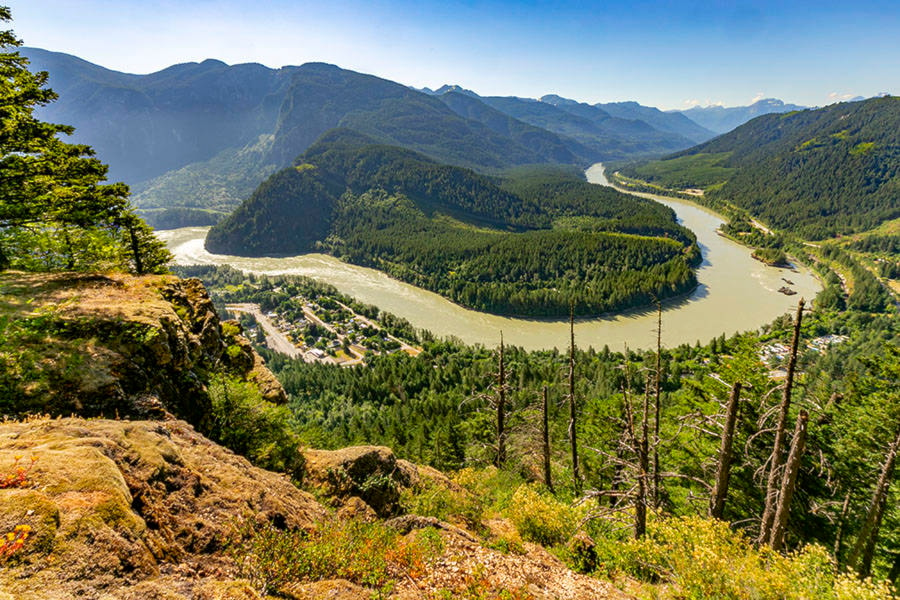It’s somewhat of an oddity that a river which sustains the lives of millions of people has had precious few books written about it say authors Carol and Rick Blacklaws, who have penned and photographed a narrative of the river from its impressive mountainous beginnings to its salty spill into the Pacific Ocean.
B.C.’s longest and largest river, stretching 1,375 km from the Rocky Mountains to the Strait of Georgia, is the subject of the Blacklaws’ latest work. The Fraser: River of Life and Legend has been a long time coming and many trips on various parts of the Fraser for them – Rick has spent 15 years photographing the river and Carol spent four years crafting the book’s narrative.
Despite the Fraser being so accessible, Rick said even the highest reaches such as the village of Tête Jaune Cache are accessible by road, few know much about most of the river. Back in 1996 Rick collaborated with Alan Haig-Brown on the book The Fraser River and since then, he said, precious little has been written about the river. “For the creative person, the Fraser can be a playground or sense of adventure,” he said. “The regions of the Fraser are so dramatic…and for the artists, for the writers, for the poets, it is a very accessible playground to go and explore.”
The book begins with one such adventure as Carol is ‘silted’ for the first time during a celebration of hers and Rick’s 10th wedding anniversary. Being silted, if you haven’t had the pleasure, is being drenched by river water then having a thin layer of sediment left on your skin once you dry out Carol explains. “I just remember water everywhere,” she said about the surprise trip, when she had instead half expected a romantic dinner and a diamond. That was 30 years ago.
The book is dedicated to all of those who stood at the banks of the mighty Fraser, who ‘marvelled at its greatness and care about its preservation.’ But, as Carol says, even those who love the river really only see the portion of the river that they are standing on.
Most will know only the Fraser’s drainage area in the Vancouver region, which is home to close to 3 million people. Hope and Fraser Canyon dwellers will know the power of the river as it winds its way down the steep canyon. And even further upstream, near Mt. Robson, lies a “stunningly Canadian, iconic, beautiful setting,” Carol said.
“Like all rivers, the Fraser begins with a single droplet,” she writes. “A river’s beginning is a cumulative masterpiece created by thousands of tiny droplets of rain and glacial meltwater that join, collide and freefall down mountain slopes in an alpine water ballet.” The Blacklaws start their epic river journey at Mt. Robson and their narrative continues in sections down from the upper reaches all the way to the lower reaches, passing along the grasslands and the Fraser Canyon and down into Hope.
Accompanying Carol’s narrative, which weaves natural and human history with contemporary reality, are awe-inspiring photographs – many of which are displayed on full pages of the coffee table book. It was a gargantuan task to comb through the 7,000 photos – “thank God for Lightroom” – that Rick had taken over a decade and a half and distill them down to 150. “As a photographer you want to contribute to the field of photography, and the river was my vehicle,” he said.
Traveling down the river, the Blacklaws introduce the people who live their lives by and together with the river as well as those who dedicated their lives to protecting the river and the nature surrounding it. Like Ruby Dunstan, Nlaka’pamux elder, seeker of justice for residential school survivors and first female chief of the Lytton First Nation whose advocacy led to the protection of a swathe of the Stein Valley from clear-cut logging.
The Blacklaws make stopovers at Fraser River Raft Expedition’s historic 1864 Teague House and meet Susan Baerg, as well as travel with Sto:lo historian Sonny McHalsie to a former village site. McHalsie, a household name in these parts, points out remnants of pit houses, a longhouse as well as natural features of the river with deep meaning to the Sto:lo people.
He points to a granite slab called Mometes, index finger of the ancestors, which also signifies the area of the Sto:lo fishery. “It represents the old people waving their fingers at us to tell us to be good,” McHalsie tells the Blacklaws.
He isn’t the only Indigenous storyteller the Blacklaws meet on the Fraser, who share their stories and their connections to the river. “That was a reminder to me that, I can go and come back, but the First Nations don’t leave…they have long-term, generational equity and desire to protect the river,” Rick said.
Natural history combines with evidence of the Cariboo and Fraser Canyon gold rushes, such as the mounds of river rocks stacked meticulously, evidence of placer mines, or the gravel bars created by gold mining which are now permanent fixtures of the river in the Fraser Canyon.
Read more: B.C. historian reveals the untold story of the Fraser Canyon War in new book
Companions on the Blacklaws’ Fraser River foray chime in to tell tales of the people and places along the route, including river guide Darwin Baerg who illuminates the group on the origin of Jackass Peak – a treacherous Fraser Canyon cliff where, as the story goes, a pack mule, also known as a jackass, bound for the Barkerville gold fields carrying supplies plunged to its death sometime in the 1860s. Or the town of Yale’s history as a ‘wanton party town’ when its population balooned to 35,000 during the brief Fraser River gold rush.
Even with all of the local history within its pages, Rick said it is still a survey book. “There are dozens more books to be written about the Fraser,” he said. “This is almost still an introduction book, a ‘Welcome to the Fraser River.’”
You can’t talk about the river without talking about salmon – harvesting salmon is the way many people know the Fraser and this is the focus of the work of many First Nations advocates. It’s also the biggest change the river has seen in the past two decades, Rick said, “we don’t see people fishing on the river as much” and much fewer salmon swim back upstream now.
Read more: Time for Indigenous-led salmon strategy on the Lower Fraser, says Alliance
And without talking about industry and development, the Fraser’s story wouldn’t be complete. This includes the gravel deposits on the lower reaches of the Fraser, eyed by people who want to extract it. Through four years of researching 50,000 fish along the gravel below Hope, UBC professor of geology Mike Church found each gravel habitat is unique and has a different type of community of fish. “Removing the gravel removes the habitat, which impacts fish,” he told the authors.
As the river winds its way into Quesnel, Williams Lake and Prince George “that’s where it probably had it’s biggest environmental hit,” Carol said. “But the water is still percolating as it goes through the grasslands, which in essence refreshes this river in an isolated area.” The grasslands, owing to the Trans-Canada highway veering away from the Fraser at Lytton, is still a relatively unknown area to most British Columbians.
Seeing the estuary section of the river was also “hard to swallow” Carol said, as the normal outflow from metropolitan areas such as sewage and other effluent ends up in the river.
Carol and Rick are very enthusiastic about people getting out on the river, for example on a raft manned by experienced river guides. “If people are on the river and have an affinity for it, then there’s more environmental consciousness around it,” Carol said. “But within the Lower Mainland people have been discouraged from even touching the river because there are no boat accesses. Also there’s resource extraction in that area.”
For the Blacklaws, the river provided a way for Carol to expose her children to the outdoor world as well as understanding the First Nations as well as the river guides’ passion for it.
“To know the river is to love the river, and a love for the river will protect it,” Carol concludes the book. And the best way to protect the mighty Fraser, she adds, is to let the river flow as it always has done.
“If the river is left to its own devices it will be fine, we just need to stop damaging it,” she said. “We just need to leave it alone.”
The Fraser: River of Life and Legend can be purchased at Baker’s Books at 800 3 Ave in Hope.
Do you have something to add to this story, or something else we should report on? Email:
emelie.peacock@hopestandard.com
Facebook and follow us on Twitter
